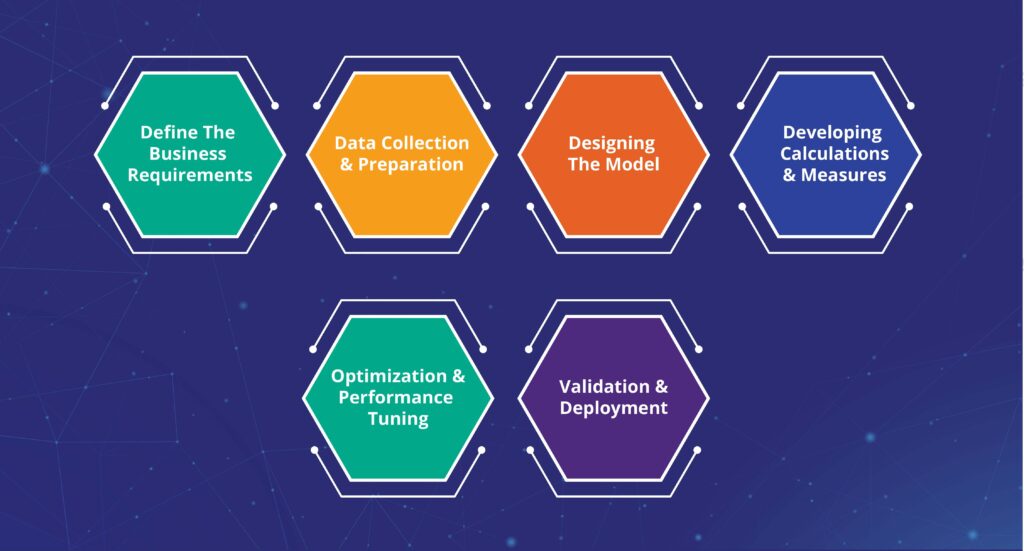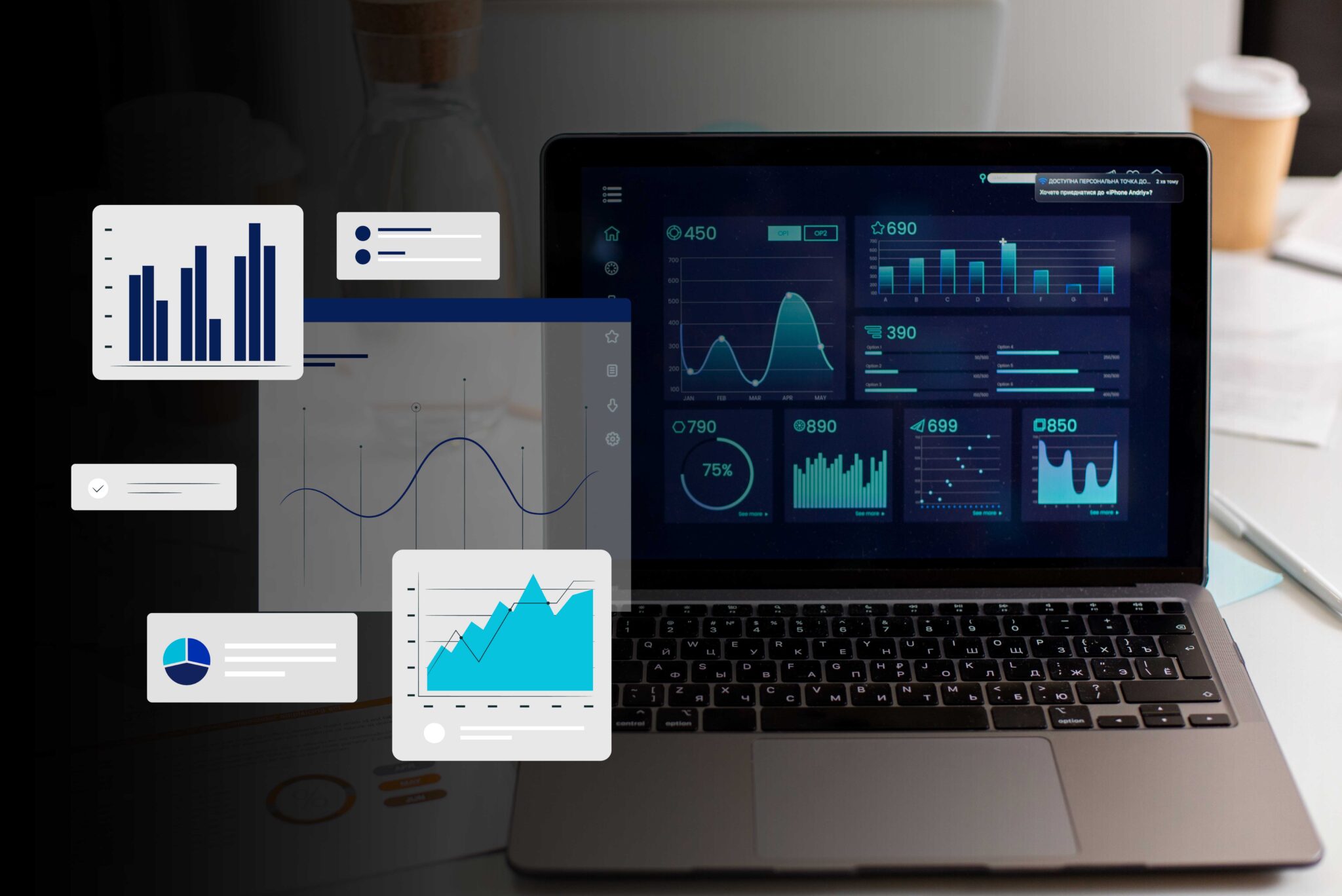Introduction
Today’s competitive and challenging businesses are completely dependent on data. Data is the strong source that makes them capable of making important and real time decisions. This is the reason why businesses are engaged in finding different ways to extract valuable information from their data. Due to the huge demand for a powerful, reliable and efficient tool for this purpose, Power BI has been introduced. In a very short time this tool has become so popular. It is a powerful business intelligence tool with extensive features for effortless and flawless data visualization and analysis. Advanced data modeling in Power BI utilizes these features to offer better information even with complicated data interactions. This technique is popular for providing a comprehensive view of the data. This approach directly helps professionals to make better decisions. So, let us know the concept of advanced data modeling in detail by knowing about its benefits and the key steps to implementing it in Power BI.
What is Advanced Data Modeling?
Data modeling is now an important aspect of Power BI. It includes different actions, for example designing a data model. This perfectly designed data model helps to efficiently structure and connect different data sources to satisfy your specific analytical requirements. Advanced data modeling techniques include creating calculated columns, measures, and relationships between different types of data sources. These techniques improve data retrieval performance and increase the interpretative capability of Power BI. They do so by simplifying complicated queries and data manipulation practices. By implementing these techniques, Power BI can provide a wide range of analytical information and visualizations to help businesses to make better and more informed decisions. Logical data modeling is a necessary and powerful skill for Power BI to efficiently use this technologically advanced tool.
What are the Benefits of Using Advanced Data Modeling Techniques in Power BI?
The implementation of advanced data modeling techniques in Power BI provides many attractive and useful benefits:

- Improved Performance: Efficient models reduce processing time and improve the responsiveness of Power BI dashboards.
- Greater Flexibility: Advanced models are designed to adapt changes more frequently than traditional models. They can easily change as per your business requirements and data sources.
- Improved Accuracy: These models effectively manage and update data by effectively reducing mistakes and providing the assurance of consistency across reports.
- Detailed Information: Advanced modeling allows you to explore complicated relationships and patterns. That will work far better than basic modeling.
- Scalability: You cannot refuse the fact that business data grows along with time. Advanced models are proven for flexibly scaling to effectively manage increased data loads without affecting performance.

What are the Steps of Advanced Data Modeling Techniques in Power BI?
Creating an advanced data model in Power BI is one of the most important processes. It effectively changes raw data into meaningful information. This information supports actionable business intelligence. This task includes stepwise execution for best-in-class results:

- Define the Business Requirements: The first step of this process is to clearly identify your business target. This identification will help to prepare effectively strategies to achieve it with the conceptual data model. If you are looking to analyze future trends, analyze current patterns, or get the latest updates into daily operation, then it becomes necessary to identify these objectives early. It will guide you through the entire modeling process.
- Data Collection and Preparation: Once your goals are defined your next step would be to collect necessary data from different sources. This step is very important for this process, and it includes the cleansing of data to remove mistakes and inconsistencies. It is also required to fill in missing values. Data Collection and preparation helps ensure all data is available in a usable format. It also ensures that the model you are building is both accurate and reliable.
- Designing the Model: Now you have collected data with all required preparations. Now you need to start the structuring process of your model with ready data. In Power BI, this includes some necessary tasks, for example, creating tables and setting up relationships between them. Power BI’s intuitive interface helps you with easy to use drag and drop elements to build your model efficiently. It also allows you to use DAX. DAX is Power BI’s formula language that is used to define more complicated relationships and calculations.
- Developing Calculations and Measures: At this step by using DAX, you can develop effective formulas for your specific business requirements and logic. This process sometimes includes calculations for sales forecasts, financial summaries, and customer behavior analytics. These measures are required for turning raw data into meaningful information to make informed business decisions.
- Optimization and Performance Tuning: After setting up your model and calculations, it becomes important to make sure that models perform properly. This includes the procedure of optimizing your DAX expressions for speed and efficiency. Also managing how data is refreshed within your model is part of this process. Efficient performance is key to ensure that end-users can access information quickly and reliably.
- Validation and Deployment: The last step of creating advanced data modeling techniques in Power BI is to test your data model. Now get engaged with end-users as they will interact with the model. Your interaction will make sure that data models meet their needs and are easy to use. After strict testing, you can deploy the model within the Power BI service. This will make it accessible to all relevant parties in the organization.
By following these steps, you can build a technologically advanced and efficient data model in Power BI that perfectly meets and flexibly exceeds as per business requirements.
Advanced data modeling in Power BI is not just about handling data efficiently; it is also a process of innovating data into a strategic format. The details provided by advanced techniques can effectively improve the quality of business intelligence. As businesses constantly change present competitive environments, the capability to immediately innovate complicated data sets through effective models in Power BI becomes a necessity competitive business world.
Conclusion
Power BI is a technological advanced platform that empowers organizations to get meaningful and accurate information from their data. Advanced modeling techniques turn challenging tasks into reality. By becoming an expert in these techniques, businesses can utilize the full strength of their data.
Are you curious to know more about Power BI? We are here with some more interesting information in our next blog on Power BI Desktop: Overview and Features. Click here to improve your Power BI expertise.
Have a Question?





























